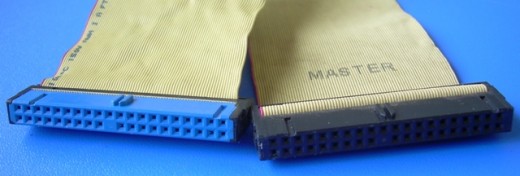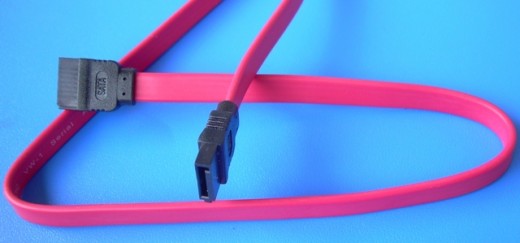Differences between IDE, PATA and SATA Cables
The Need for Speed
To achieve greater computer speed, cables that connect the hard drive to the motherboard undergo development as computer technology progresses. These cables differ in terms of speed by which they transfer data as well as the kind of peripherals these cables connect to the motherboard.
If one intends to build his own desktop computer and need to buy and choose a hard drive, familiarity with cables that connect the hard drive to the motherboard is required to prevent issues of incompatibility. You might want to upgrade your hard drive in an old computer and find that you bought a SATA hard drive that requires, of course, a SATA cable for attachment to the IDE slot of the old motherboard. A third-party SATA controller, however, can make possible attachment of a SATA hard drive to an old PATA slot.
Three types of cables are described here namely IDE, PATA, and SATA cables. Photos show each type.
What is an IDE Cable?
Definition
IDE is acronym for Integrated Drive Electronics. An IDE cable connects the IDE hard drive to the computer’s motherboard. The conventional IDE cable even with improved later versions of IDE like the Enhanced Integrated Drive Electronics (EIDE) is gradually phased out as new types of cables like SATA cables are developed. You can usually find the original IDE in old computers 2-5 years old.
Data Transfer Rate
The first IDE cable has a data transfer rate of 8.3 megabits per second (Mb/s). Later improvements on the standard, however, achieve a data transfer rate of 133 Mb/s.
What is a PATA Cable?
Definition
PATA is acronym for Parallel Advanced Technology Attachment which, essentially, is an IDE standard for connecting hard drives to the motherboard. PATA is used to be called ATA but new cables called SATA or Serial Advanced Technology Attachment renamed the original ATA to PATA to distinguish the new technology from the older one.
Data Transfer Rate
The data transfer rate of PATA cables reached a ceiling of 150 Mb/s.
The IDE/PATA Cable

What is a SATA Cable?
Definition
SATA is acronym for Serial Advanced Technology Attachment. This is now the current standard to replace the parallel ATA, PATA or IDE.
Data Transfer Rate
SATA cable started off where PATA reached its maximum at 150 Mb/s. Newer SATA cables allow transfer rates of up to 6 Gb/s (!) as of this writing.
The SATA Cable

SATA cables are preferred over the old IDE or PATA cables. In addition, SATA cables allow better airflow in the computer unlike the wider ribbon of IDE or PATA. Also, SATA cables can be as long as 39 inches (3.25 feet) compared to the maximum length of IDE/PATA at 18 inches. SATA cables are also energy efficient. SATA requires only 250 mV for operation, a fraction of IDE/PATA’s requirement of 5 V.
9 Comments



After reading your blog post I browsed your website a bit and noticed you aren’t ranking nearly as well in Google as you could be. I possess a handful of blogs myself and I think you should take a look here: http://seopressors.org You’ll find it’s a very nice tool that can bring you a lot more visitors. Keep up the quality posts
If you want to get social bookmarking backlinks that will help skyrocket your website search engine ranking straight to the top, check out this site http://socialbookmarksubmission.org/
If you’re serious about getting tons of free targeted traffic to your site, watch this 1 minute video for free at http://doneforyoutrafficz.com
If you want to get your youtube video virals, check out http://buyyoutubeview.biz/ Get 10000 YouTube Video views in less than 5 days with our help
Hi there! Just discovered your site while i was browsing and i must say that i found it quite interesting! I hope you don’t mind if i return here from time to time and check your content…Meanwhile, if anyone is interesting in FREE FULL MOVIES, just follow this link: http://fastvisit.tk/FreeFullMovies It’a great resource, Enjoy it! Regards.
Heya this is a superb clause. I’m going to e-mail this to my pals. I stumbled on this although exploring on yahoo I’ll be assured to come rearward. recognition for sharing.
Thanks a lot, I
we came across a cool website that you simply may well enjoy. Take a appear should you want
What blog pages for politics commentary might you advocate me to read?